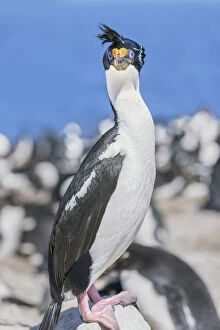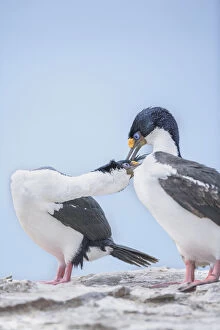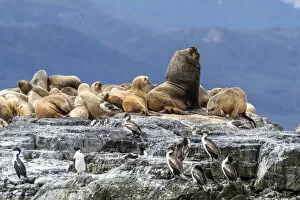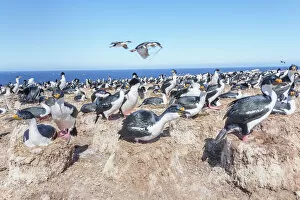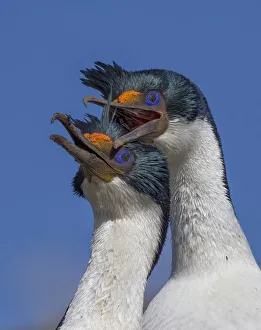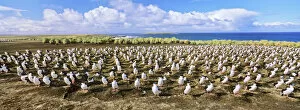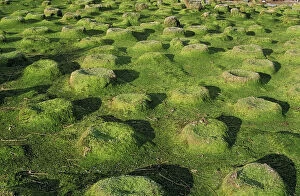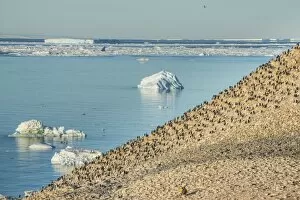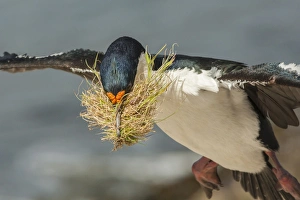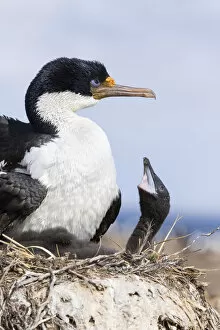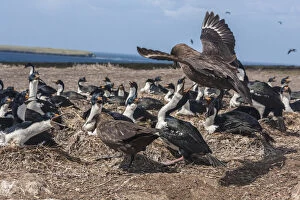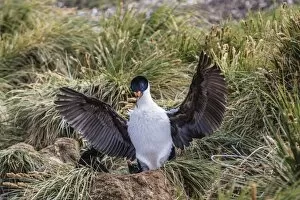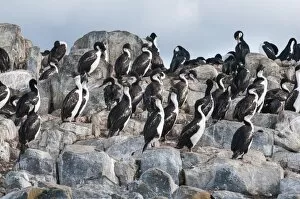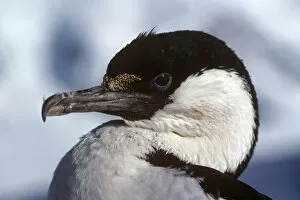Imperial Shag Collection
The Imperial Shag: Majestic Birds of the Falkland Islands On Sea Lion Island, in the breathtaking Falkland Islands
All Professionally Made to Order for Quick Shipping
The Imperial Shag: Majestic Birds of the Falkland Islands On Sea Lion Island, in the breathtaking Falkland Islands, a vibrant colony of Imperial shags (Leucocarbo atriceps) thrives. These magnificent seabirds are known for their striking appearance and fascinating behaviors. As you explore this remote island paradise, you'll witness the impressive courtship rituals of these elegant creatures. Adult male South American sea lions (Otaria flavescens) proudly display their dominance while adult females gracefully navigate through the rocky terrain. Amongst them, the Imperial shags tirelessly gather nesting material to create secure homes for their young. With precision and determination, they carry twigs and branches to construct intricate nests that cling precariously to cliff edges. In another corner of Bleaker Island lies a bustling colony of King Cormorants or Imperial Shags (Phalacrocorax atriceps albiventer). Here, amidst raucous calls and flapping wings, these birds engage in enchanting courtship behavior as they seek out lifelong mates. These avian wonders are not only visually captivating but also play an essential role in maintaining ecological balance within their marine habitat. Their diet primarily consists of fish, which helps regulate local populations and ensures a healthy ecosystem. Observing these imperial creatures against the backdrop of Sea Lion Island's rugged beauty is truly awe-inspiring. The Falkland Islands provide an ideal sanctuary for such remarkable species to thrive undisturbed by human interference. So next time you find yourself on this remote archipelago in the southern Atlantic Ocean, take a moment to appreciate the grace and resilience of the Imperial shag, and are living testaments to nature's boundless wonders and remind us why it is crucial to protect our planet's diverse wildlife.

